#dr vikram a sarabhai
Text
Dr. Vikram Sarabhai: A Visionary Pioneer’s Trailblazing Journey
Vikram Sarabhai's narrative stands as an embodiment of audacious aspiration, unyielding determination, and visionary leadership. His contributions have sculpted India's scientific and technological tapestry, and his legacy continues to guide contemporary explorations of the cosmos.

In the pantheon of Indian scientific luminaries, few names resonate as profoundly as Dr. Vikram Sarabhai. Born on August 12, 1919, in Ahmedabad, India, Sarabhai’s legacy is one of transformative contributions to space research, education, and the holistic advancement of his nation. This article unveils the extraordinary odyssey of Vikram Sarabhai, illuminating his accomplishments, innovations, and timeless influence.
Early Life and Scholarly Pursuits
Vikram Ambalal Sarabhai emerged from a lineage steeped in academia and entrepreneurial spirit. His father, Ambalal Sarabhai, an esteemed industrialist, and his mother, Sarla Devi, a genuine disciple of Mahatma Gandhi, imparted a diverse cultural and intellectual upbringing. Sarabhai’s educational voyage commenced at Gujarat College in Ahmedabad, where his ardor for science ignited and propelled him toward academic excellence. Crossing oceans, he pursued his doctorate in physics at the University of Cambridge, nurturing the bedrock of his future scientific pursuits.
Pioneering the Cosmos: Architect of India’s Space Odyssey
Vikram Sarabhai’s appellation is virtually synonymous with the genesis of the Indian Space Research Organisation (ISRO). With visionary insight, he discerned the potential of space technology as an agent of socioeconomic growth and a conduit for India’s autonomy in space exploration. The inception of the Indian National Committee for Space Research (INCOSPAR) in 1962, a precursor to ISRO, stands as his seminal achievement.
Guiding ISRO’s trajectory, Sarabhai presided over an epoch of innovation and achievement that reverberated globally—a defining moment occurred in 1975 with the triumphant launch of India’s inaugural satellite, Aryabhata. This historic feat elevated India’s standing in the global space arena and attested to Sarabhai’s expansive vision. Beyond scientific exploration, he envisaged space technology as a linchpin for pragmatic challenges such as communication, meteorology, and resource management.
Galactic Vision: Nurturing Scientific Temper
Vikram Sarabhai’s luminary extended beyond the celestial realm. He ardently championed the cultivation of scientific temper among India’s youth, recognizing it as a cornerstone for national advancement. Sarabhai’s ethos permeated institutions like the Physical Research Laboratory (PRL) and the Indian Institute of Management Ahmedabad (IIMA), nurturing a symbiotic ecosystem fostering brilliance in scientific inquiry and management acumen.
Legacy in the Stars: Impact and Enduring Influence
The indelible mark of Vikram Sarabhai reverberates through the institutions he sowed, the visions he articulated, and the spirit of scientific curiosity he ignited. His ceaseless pursuit of excellence and emphasis on societal transformation continues to inspire generations of scientists, researchers, and dreamers. The pioneering achievements of ISRO, exemplified by missions like Chandrayaan and Mangalyaan, bear witness to Sarabhai’s unwavering resolve.
A Cosmic Conclusion: Vikram Sarabhai’s 104th Birth Anniversary Tribute
As we commemorate the 104th birth anniversary of Vikram Sarabhai, ISRO pays homage to the visionary luminary behind India’s cosmic journey. A connoisseur of pioneering ideas, Sarabhai’s endeavors knew no bounds. Notably, he assumed the helm of ISRO with a salary of just one rupee, embodying his devotion to his nation’s progress.
A Glimpse into the Roots:
Born on August 12, 1919, in Ahmedabad, Gujarat, Vikram Sarabhai emerged as a trailblazer in space technology and exploration. His upbringing in the influential Sarabhai family, where his father, Ambalal Sarabhai, was a successful industrialist and a staunch supporter of Mahatma Gandhi, left an indelible impression on his worldview.
Read More......
#dr vikram a sarabhai#education#indian scientific luminaries#space research#vikram ambalal sarabhai#vikram sarabhai
0 notes
Text
0 notes
Link
#Chandrayaan-2#Chandrayaan-3#India'slunarexplorationachievements#ISRO#ISROChandrayaan-3mission#Lunarlandingcommunicationmilestone#VikramSarabhai
2 notes
·
View notes
Video
।। Youth Helping Trust ।। Remembering the pioneer of Indian space program & legendary scientist Padma Vibhushan Dr. Vikram Sarabhai ji on his Death Anniversary. #DrVikramSarabhai #AvoidCrowds #WashYourHand #CleanDesinfect #TopDelhiNGO #MakeDonation #HealthCareNGOInIndia #HealthForAll #EducationForAll #WomenEmpowerment #NGOIndia #YouthEmpowerment #YouthHelpingTrust WhatsApp Us : https://api.whatsapp.com/send?phone=919411948783 Donate Now : https://www.youthhelpingtrust.org/donate-now
2 notes
·
View notes
Text
Dr. Vikram Sarabhai | Master Control facility | Department Of Space | Government Of India
0 notes
Text
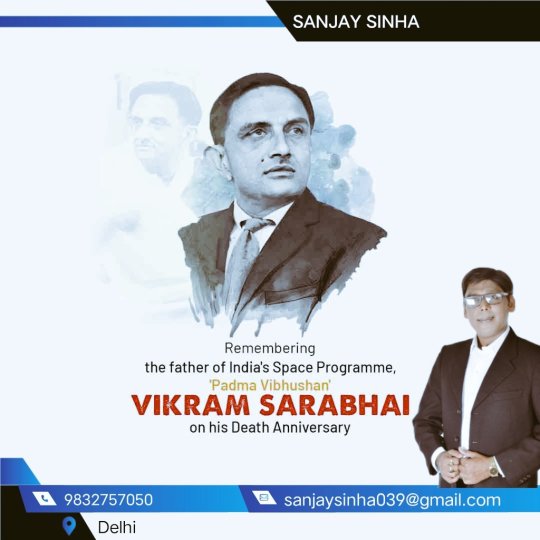
Remembering Dr. Vikram Sarabhai, the visionary & architect of India's space odyssey. His unwavering passion & pioneering spirit paved the way for our nation's celestial journey. A legacy that continues to inspire!
#VikramSarabhai
#SanjaySinha
1 note
·
View note
Text
🛰️ Remembering Dr. Vikram Sarabhai with gratitude on his death anniversary. His unwavering commitment to space science has made a profound impact on India’s technological landscape. 🚀🙏 #VikramSarabhai #SpaceVisionary #ISRO #scientist #IndianPride #affectionworld

0 notes
Text
who is the father of indian space programme?
The father of the Indian space program is Dr. Vikram Sarabhai. An iconic visionary and introducing space scientist, Dr. Sarabhai played a vital part in laying the foundation for India's space disquisition trials. Born in 1919, he combined his scientific wit with a deep commitment to public development.
In 1962, Dr. Sarabhai innovated the Indian National Committee for Space Research( INCOSPAR), the precursor to the Indian Space Research Organisation( ISRO). His vision wasn't only to harness space technology for peaceful purposes but also to address societal challenges and accelerate profitable development.
UnderDr. Sarabhai's leadership, India launched its first satellite, Aryabhata, in 1975, marking a significant corner in the country's space trip. His emphasis on the operation of space technology for telecommunications, meteorology, and agrarian monitoring showcased the realistic and inclusive approach that has become a hallmark of ISRO.
Vikram Sarabhai's benefactions extended beyond scientific achievements; he inspired a generation of scientists and laid the roots for India's emergence as a space-faring nation. His heritage endures, and ISRO continues to thrive as a global player in space disquisition, driven by the ideals and vision set forth by the father of the Indian space program, Dr. Vikram Sarabhai.
0 notes
Text
Advancements in Space Research
India’s Contributions to Global Space Exploration
Humanity has long been fascinated with space research because it represents a frontier where countries compete to advance science and technology. While several nations have contributed significantly to space exploration, India stands out as one of the industry’s up-and-coming giants. With a history spanning over 60 years, where India’s space program, headed by the Indian Space Research Organisation (ISRO), has developed into a solid and creative force that advances our knowledge of both Earth and space.
Beginning of India’s Space Journey
India first entered the field of space research in 1962 when the Indian National Committee for Space Research (INCOSPAR) was founded. A key figure in the beginning of the Indian space program was Dr Vikram Sarabhai, frequently referred to as its father. Aryabhata, India’s first satellite, was launched in 1975, a momentous occasion in the country’s space exploration history.
The Story of Mangalyaan
The Mars Orbiter Mission, or Mangalyaan, is one of India’s most recent accomplishments. With the launch of this mission on November 5, 2013, India became the fourth nation in the world to reach Mars and the first on its first attempt. This outstanding accomplishment was widely praised and demonstrated India’s proficiency in planetary exploration.
Advancement of Satellite Technology
India has advanced significantly regarding satellite technology, which has broad ramifications for applications in the country and beyond. Numerous communication, navigation, and Earth observation satellites have been launched by ISRO, benefiting a range of industries, including agriculture, disaster relief, and telecommunications.
The Reusable Launch Vehicles
ISRO has also made progress in developing reusable launch vehicle technology, with the successful testing of the RLV-TD (Reusable Launch Vehicle – Technology Demonstrator). This technology promises to significantly reduce the cost of launching payloads into space, making space research more accessible to various organizations and countries.
The Future of India’s Space Research
India’s space program is poised for an exciting and dynamic future. ISRO has ambitious plans, including lunar missions, interplanetary exploration, and the development of a space station. The Gaganyaan mission, India’s first human spaceflight endeavor, is another groundbreaking initiative that aims to send Indian astronauts to space.
Conclusion
India’s contributions to global space exploration are undeniable. From its successful missions to Mars and the Moon to developing cutting-edge satellite technology, India has become a respected player in space research. The country’s achievements are a testament to its commitment to scientific and technological advancement.
Read More: https://theknowledgereview.in/advancements-in-space-research/
SpaceResearch #GlobalSpaceExploration #science #technology #BestEducationalMagazineinIndia #TopEducationMagazine #ISRO #TheKnowledgeReview #EducationalMagazineinIndia
#educationmagazine#the knowledge review#best education magazine#education magazine#onlineeducationmagazine
0 notes
Video
youtube
Dr Vikram Sarabhai Father of India's space program
0 notes
Text
Pioneering Space Exploration: List of ISRO's Chairmen and Their Transformative Impact (1963-2023)
Since its inception in 1963, the Indian Space Research Organisation (ISRO) has played a pivotal role in shaping India’s space exploration endeavors. Over the years, ISRO has achieved numerous milestones under the guidance of visionary leaders who served as its chairmen.
From the pioneering Dr. Vikram Sarabhai to the current incumbent S Somanath, each chairman has left an indelible mark on…
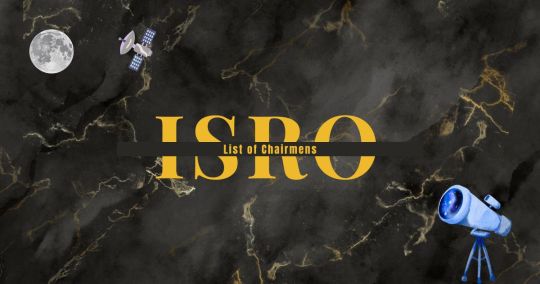
View On WordPress
0 notes
Link
[ad_1] The lander has separated from the Chandrayaan-3 spacecraft as the country targets an ambitious lunar landing on August 23 The lander module of India’s lunar mission successfully separated from the propulsion module of the Chandrayaan-3 spacecraft on Thursday, the Indian space agency has announced. The Vikram lander, named after Dr Vikram A Sarabhai, considered the father of the Indian space program, will now continue its solo journey to the Moon, while the propulsion module will remain in lunar orbit for months or even years. The separation of the lander module marks a milestone in India’s third lunar mission. On Wednesday, the spacecraft carried out the final lunar-bound orbit reduction maneuver, ahead of Chandrayaan-3 attempting a Moon landing on August 23, according to the Indian Space Research Organization (ISRO). The forthcoming phases of the mission involve activating and validating the onboard instruments, including three pivotal scientific payloads, while the lander will engage in two successive orbit-reduction maneuvers. “Lander Module Successfully separates from Propulsion Module today (August 17, 2023). The next Lander Module (Deorbit 1) maneuver is scheduled for tomorrow (August 18, 2023) around 1600 hrs IST,” the ISRO said in a tweet.Chandrayaan-3 Mission:‘Thanks for the ride, mate! 👋’ said the Lander Module (LM).LM is successfully separated from the Propulsion Module (PM)LM is set to descend to a slightly lower orbit upon a deboosting planned for tomorrow around 1600 Hrs., IST.Now, 🇮🇳 has3⃣ 🛰️🛰️🛰️… pic.twitter.com/rJKkPSr6Ct— ISRO (@isro) August 17, 2023Former ISRO scientist Mylswamy Annadurai told the ANI news agency that when the mission lands on the Moon it “will definitely be the day for India to rejoice.” A soft landing for Chandrayaan-3 on the lunar surface will position India among a select group of nations such as Russia, the US, and China, to have successfully accomplished the feat. Russia also currently has its own Moon mission in space, Luna-25, which is expected to land on the lunar south pole by August 21.In 2019, India’s Chandrayaan-2 mission deployed an orbiter but its lander and rover were destroyed when it plummeted to the Moon’s surface, leaving a crater close to where the current mission is intended to land. Chandrayaan-3 aims to successfully demonstrate a soft landing on the lunar surface, showcase Vikram’s mobility on the Moon’s terrain, and simultaneously conduct scientific experiments. In the past, space missions directed towards the Moon have mainly focused on the equatorial area, drawn by its advantageous landscape and operational circumstances. The lunar southern pole, which is targeted by both India and Russia, remains significantly uncharted territory.The shaded surface area there is considerably larger than that of the Moon's northern pole and scientists indicate that this increases the likelihood of water being present in regions that experience permanent shadow. India's first lunar mission Chandrayaan-1 launched in 2008 has discovered water molecules on the dry lunar expanse and confirmed that the Moon possesses an atmosphere during daylight hours. You can share this story on social media: Follow RT on [ad_2]
0 notes
Text
On this day, we remember the genius and vision of Dr. Vikram Sarabhai. His dreams paved the way for a new space era in India.
For more info – 8266954007 | https://pavnaintlschool.com/enroll-now/
#pavna#pavnaschool#bestschool#cambridgeeducation#beyourself#cambridgeinternationalschool#pisaligarh#pavnaintlschool
0 notes
Text
Vikram Sarabhai Birth Anniversary 2023

Remembering the visionary Dr. Vikram Sarabhai on his birth anniversary. His pioneering spirit in space research continues to inspire generations to reach for the stars.
#VikramSarabhai#SpaceVisionary#ScientificInnovation#ISRO#SpaceResearch#InspirationLegacy#SciencePioneer#Astronomy#SpaceExploration#DreamBig#LegacyLivesOn#devrajgroupofcolleges#law#sggu#godhra#bsc#msc#msw#bsw#llb#science#GodhraUniversity#ShriGovindGuruUniversityGodhra
1 note
·
View note
Text
Chandrayaan 3 Launch Live Updates: ISRO LVM 3
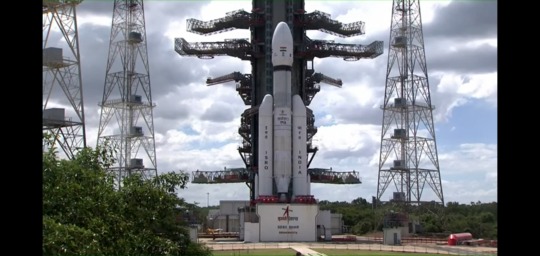
Chandrayaan 3 Launch Live Updates: ISRO Lunches LVM 3 Successfully
The Indian Space Research Organisation (ISRO) successfully launched its third lunar mission, Chandrayaan-3, on Friday, July 14, 2023. The launch took place at 2:35 p.m. IST from the Satish Dhawan Space Centre in Sriharikota, Andhra Pradesh.
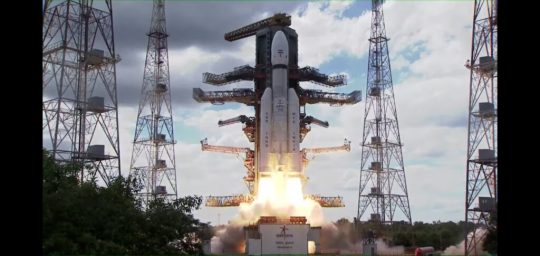
Chandrayaan 3 lunch live updates
Chandrayaan-3 is a robotic mission that consists of a propulsion module, a lander module, and a rover. The propulsion module will transport the lander and rover from the injection orbit to the lunar orbit up to 100 kilometers. The lander will then descend to the lunar surface, where it will deploy the rover.
The main purpose of Chandrayaan-3 is to create and showcase innovative technologies essential for missions between planets. The mission will also conduct scientific experiments to study the lunar surface and its environment.
The launch of Chandrayaan-3 was a major milestone for India's space program. It is the first time that India has attempted to land a spacecraft on the moon's south pole, which is a region that has not been explored by any other country.
The success of Chandrayaan-3 is a testament to the hard work and dedication of the ISRO team. It is also a significant achievement for India, which is now one of the few countries in the world that has the capability to land a spacecraft on the moon.
Here are some additional details about the mission Chandrayaan 3:
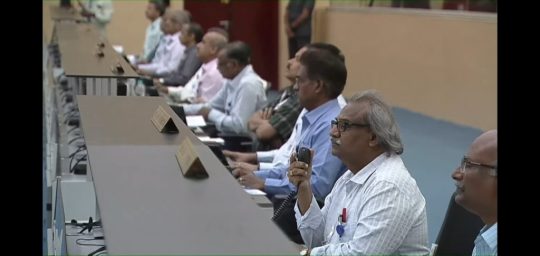
Chandrayaan 3 lunch live updates
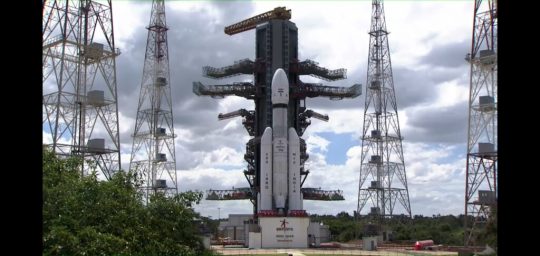
Chandrayaan 3 lunch live updates
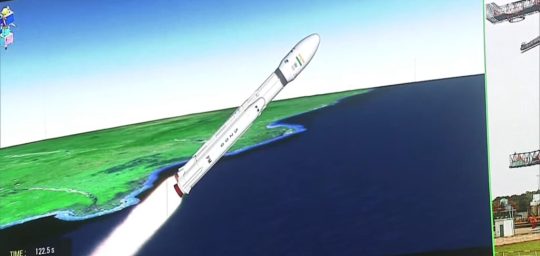
Chandrayaan 3 lunch live updates

Chandrayaan 3 lunch live updates
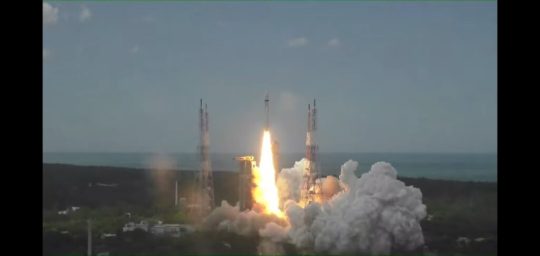
Chandrayaan 3 lunch live updates
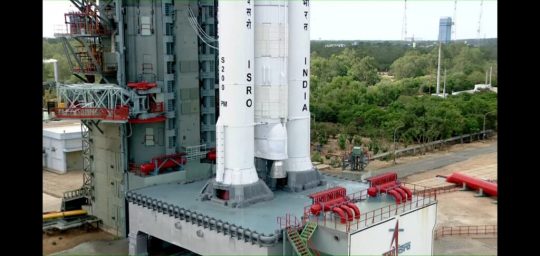
Chandrayaan 3 lunch live updates
- The propulsion module is based on the PSLV-C39 launch vehicle.
- The lander module is named Vikram, after the father of India's space program, Vikram Sarabhai.
- The rover is named Pragyan, which means "wisdom" in Sanskrit.
- The mission is expected to last for one year.
The launch of Chandrayaan-3 was met with widespread praise and congratulations from around the world. Indian Prime Minister Narendra Modi tweeted that the launch was a "moment of pride" for India. He also said that the mission would "further our understanding of the moon and its mysteries."
The success of Chandrayaan-3 is a major boost for India's space program. It is a sign that India is a major player in the global space race. The mission is also a source of inspiration for Indians around the world. It shows that India is capable of achieving great things.
The launch of Chandrayaan-3 was met with widespread praise from the scientific community. Dr. S. Somanath, the chairman of ISRO, said that the launch was a "major accomplishment" for the Indian space program. He added that the mission would "help us to better understand the moon and its evolution."
The success of Chandrayaan-3 is a testament to the hard work and dedication of the scientists and engineers at ISRO. It is also a reminder of India's growing capabilities in the field of space exploration.
India Successfully launched Chandrayaan 3
- India successfully launched its third lunar mission, Chandrayaan-3, on July 14, 2023.
- The mission aims to soft-land a lander and rover on the lunar surface.
- The launch is a significant milestone for India's space program and is expected to provide valuable scientific data about the moon.
- The success of Chandrayaan-3 is a testament to the hard work and dedication of the scientists and engineers at ISRO.
- The Chandrayaan-3 mission is a follow-on to the Chandrayaan-2 mission, which launched in 2019. Chandrayaan-2 was the first Indian mission to soft-land on the moon, but the lander failed to deploy the rover.
- The Chandrayaan-3 lander is named Vikram, after Vikram Sarabhai, the father of the Indian space program. The rover is named Pragyan, which means "wisdom" in Sanskrit.
- The Chandrayaan-3 mission is equipped with a variety of scientific instruments to study the lunar surface, including:
- A spectrometer to study the composition of the lunar surface
- A camera to image the lunar surface
- A magnetometer to measure the magnetic field of the moon
- A seismometer to measure the seismic activity of the moon
- The Chandrayaan-3 mission is expected to provide valuable data about the moon's evolution, its composition, and its potential for resources.
- The success of Chandrayaan-3 will further cement India's position as a leading spacefaring nation.
- Chandrayaan 3 has developed & designed by ISRO.
According to ISRO about Chandrayaan 3
Chandrayaan-3, India's lunar mission, consists of a Lander module, Propulsion module, and Rover. Its objective is to develop and demonstrate new technologies for interplanetary missions. The Lander will soft land on the lunar surface and deploy the Rover for in-situ chemical analysis. Both the Lander and Rover have scientific payloads for experiments. The Propulsion Module carries the Lander to the lunar orbit and separates from it. The mission objectives include safe landing, Rover mobility, and scientific experiments. Advanced technologies in the Lander include altimeters, velocimeters, inertial measurement, propulsion system, navigation and guidance, hazard detection, and landing leg mechanism. The GSLV-Mk3 launcher will place the module in an elliptic parking orbit.
Countries which has successfully landed a spacecraft on the Moon
There are only 3 countries that have successfully landed a spacecraft on the Moon:
- United States: The United States was the first country to successfully land a spacecraft on the Moon, with the Apollo 11 mission in 1969. There were a total of 6 crewed Apollo missions that landed on the Moon between 1969 and 1972.
- Soviet Union: The Soviet Union was the second country to successfully land a spacecraft on the Moon, with the Luna 9 mission in 1966. There were a total of 15 successful uncrewed Soviet Moon missions, including 3 that returned samples of lunar soil to Earth.
- China: China became the third country to successfully land a spacecraft on the Moon, with the Chang'e 3 mission in 2013. The Chang'e 3 mission also deployed a rover, Yutu, which was the first rover to operate on the far side of the Moon.
Other countries, such as India, Japan, and the European Space Agency, have sent spacecraft to the Moon, but they have not yet successfully landed on the surface.
In addition to these countries, there are a number of private companies that are developing spacecraft that could one day land on the Moon. These companies include SpaceX, Blue Origin, and Moon Express.
Read the full article
#3#Chandrayaan#Chandrayaan3#Dhawan#Liveupdates#Mangalyaan#NASA#new#NewDelhi#Newspace#SatishDhawan#Space#Spaceagency#Telangana#Yaan
0 notes
Text
Watch "What Would It Mean For Dr. Vikram Sarabhai To Know India Had Landed A Lander On Moon?" on YouTube
youtube
0 notes